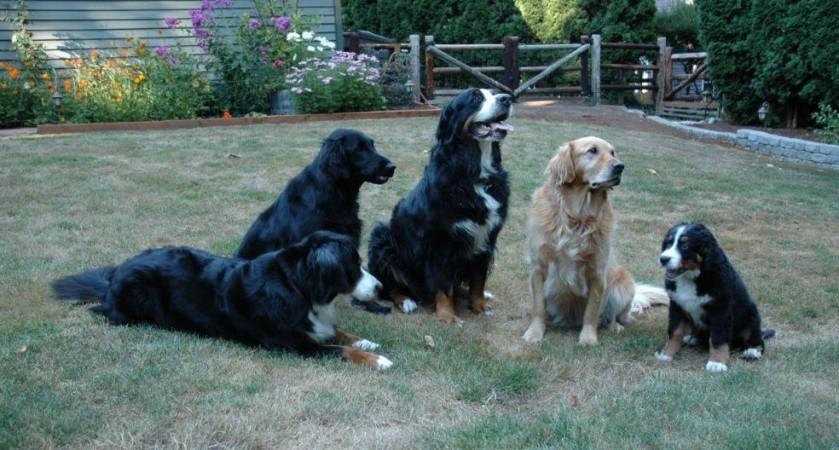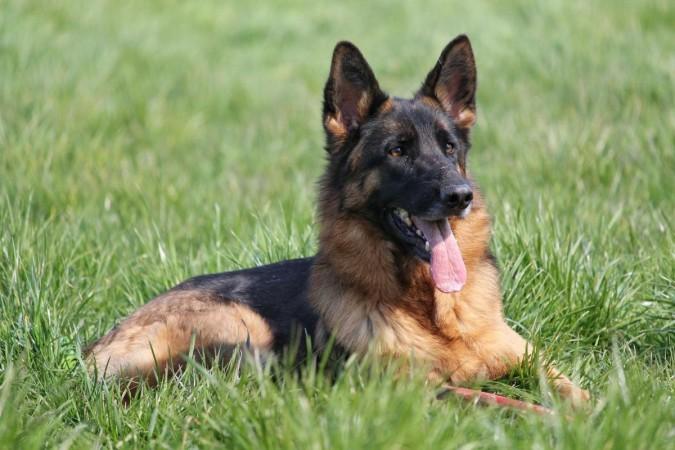It is not without reason that dogs are considered "Man's best friend". They share many traits with human beings that often lead to the development of a lifelong bond between the two species. Also, some breeds more than others, are known for their hyperactive and playful nature. Now, a new study has stated that domesticated canines possess behaviour resembling ADHD (Attention deficit hyperactivity disorder) in humans.
According to researchers from the University of Helsinki, dogs can spontaneously exhibit high levels of hyperactivity, impulsivity and inattention—key components of human ADHD. It was found that the age, breed and gender of the dog, along with any behavioural problems and environmental factors, were associated with the ADHD-like condition manifested by them.
"Our findings can help to better identify, understand and treat canine hyperactivity, impulsivity and inattention. Moreover, they indicated similarity with human ADHD, consolidating the role of dogs in ADHD-related research," said Dr. Hannes Lohi, lead author of the study in a statement.
Evaluating Human-like Condition In Canines

ADHD is a disorder that results in above-normal levels of impulsive and hyperactive behaviours. Individuals with ADHD may additionally have trouble with focusing their attention on a specific task or even sit still for long durations. While it begins in childhood, it can continue into adulthood as well.
For the study, the authors examined the effects of environmental, demographic and behavioural factors on hyperactivity, impulsivity and inattention in over 11,000 dogs. Using questions in a survey employed for ADHD research in human beings, the traits were evaluated.
Replies to the questionnaire were collected from February 2015 to September 2018. Dogs of all sizes and several breeds, that considerably differed significantly from each other, were included in the research.
The main aim of the study was to find out the environmental factors giving rise to ADHD-like behaviour in canines and possible connection to other behavioural traits. "Dogs share many similarities with humans, including physiological traits and the same environment. In addition, ADHD-like behaviour naturally occurs in dogs. This makes dogs an interesting model for investigating ADHD in humans," remarked Sini Sulkama, co-author of the study.
Role of Age and Gender

The team observed that in young dogs and male dogs, inattention, impulsivity and hyperactivity were more common. This is an important finding as observational links to gender and age have been observed in relation to ADHD in humans as well. It also contradicts those from previous studies that found no notable differences in the studied traits between the sexes.
It also noted that hyperactivity, impulsiveness and inattentiveness were higher in dogs that spent more time alone at home in comparison to those who spent lesser time by themselves. "As social animals, dogs can get frustrated and stressed when they are alone, which can be released as hyperactivity, impulsivity and inattention. It may be that dogs who spend longer periods in solitude also get less exercise and attention from their owners," expressed Sulkama.
Interestingly, a new link was discovered by the authors: a link between impulsivity and hyperactivity, and the owner's experience with dogs. These two characteristics were found to be more common among dogs that were not the first dogs of their owners. However, the phenomenon's causality is unclear as of now.
"People may pick as their first dog a less active individual that better matches the idea of a pet dog, whereas more active and challenging dogs can be chosen after gaining more experience with dogs," explained Sulkama.
Notable Differences between Breeds

It is known that breeding has a significant impact on behaviour specific to different breeds of dogs. Through the current study, the team highlighted several breed differences, thereby, indicating a considerable genetic basis for hyperactivity, impulsivity and inattention.
"Hyperactivity and impulsivity on the one hand, and good concentration on the other, are common in breeds bred for work, such as the German Shepherd and Border Collie. In contrast, a more calm disposition is considered a benefit in breeds that are popular as pets or show dogs, such as the Chihuahua, Long-Haired Collie and Poodle, making them easier companions in everyday life," stated Dr. Lohi.
He also emphasized that in dogs bred to be pets or show dogs, the ability to concentrate has largely remained unconsidered as a key trait like it is in working breeds. This, according to Dr. Lohi, is the reason behind increased inattention in pet dogs.

















